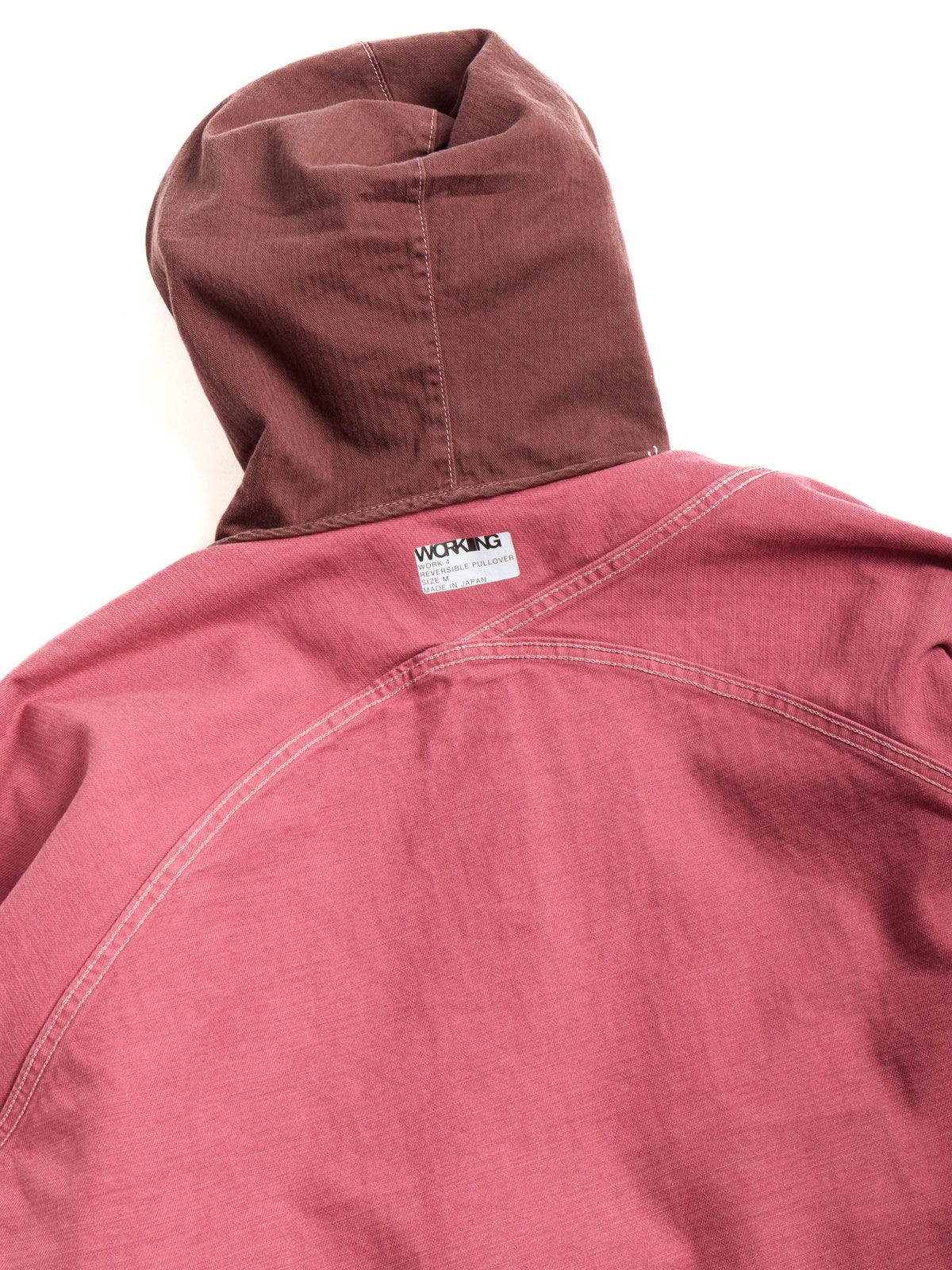Workwear is everywhere, from the streets to the runway, from your local department store to the NBA courtside. Die, Workwear! says Derek Guy. But it won’t. It won’t because it can’t. And it can’t because it exists almost like a Mortonian hyperobject, a thing so massively distributed in time and space that every attempt to completely define or fully understand it necessarily fails, inaccessible as its essence is to the sight, smell, taste, touch and hearing of us mortals. We can try to interpret it, for sure. Yet, as Marx would surely have asked, when has that ever resulted in something good, or anything at all?

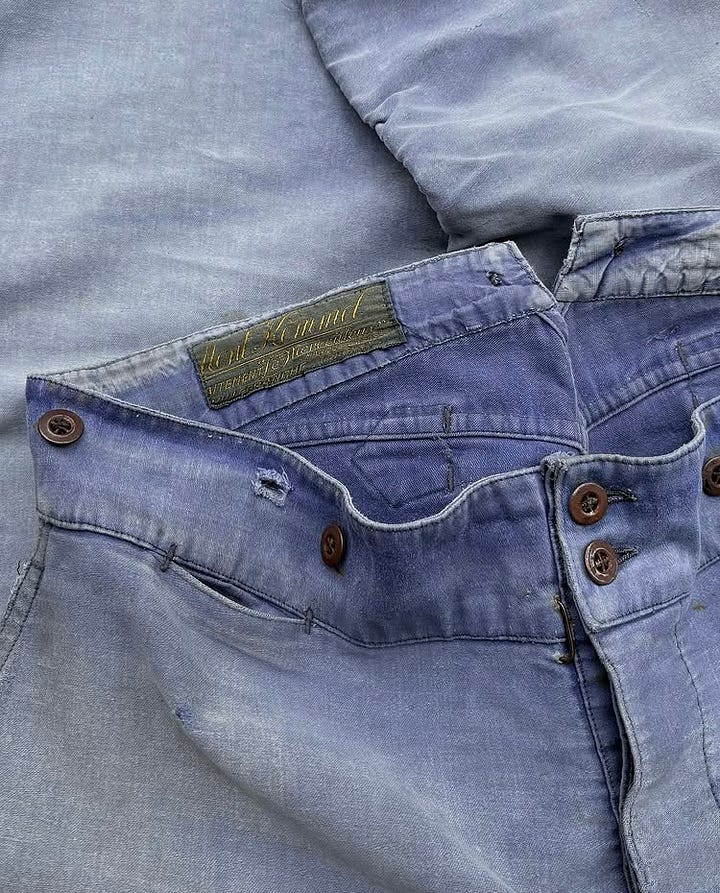

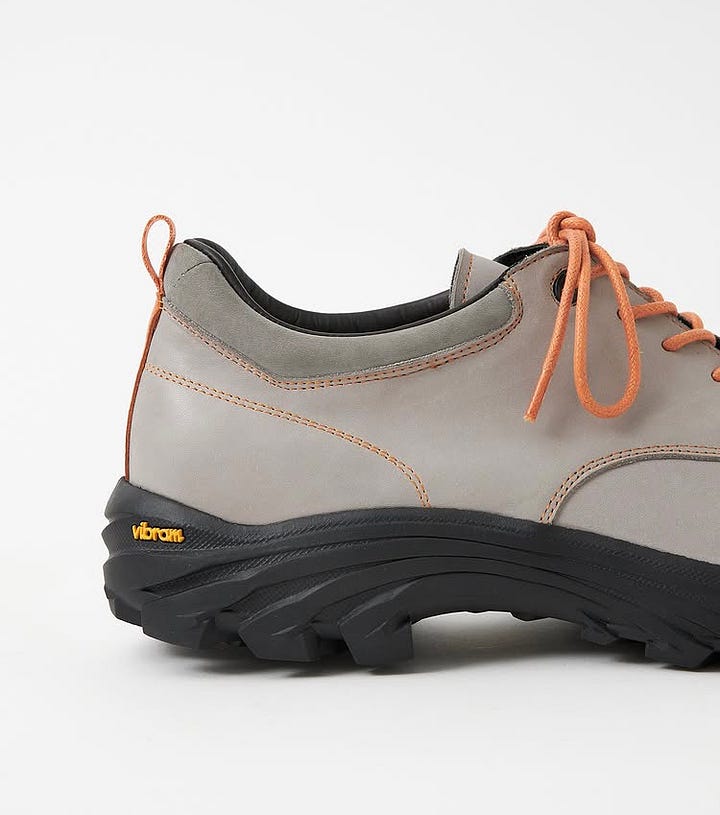
Think about the complexities. There’s classical American workwear. There’s the made-in-Japan reproductions of Americana. There’s the American reinterpretation of Japanese repro style. There’s the return to classical Japanese workwear, from complete tobi fits in New York to stand-alone tabis in London. There’s the issue of when such re-appropriating amounts to cultural appropriation. There’s the question of what it means for a piece of workwear — of The Real McCoy’s or Buzz Rickson caliber, say — to be “an original” or “a reproduction,” let alone “an original reproduction” or “a reproduced original.” As part of the category of workwear that cannot be used as workwear, there’s the wave of non-safety safety shoes, from Paracia and gr10k for instance. And, last but not least, there’s the ongoing Japanese craze for early-/mid-20th-century French workwear, and the unknown cultural significance of paying €1850 online for a destroyed moleskin jacket that’s €19,99 at the marché local.
About 15 years ago, William Kroll — designer and founder (with his wife Deborah) of the UK-born, US-based brand Tender — found himself inside a similar maze. After graduating in menswear from Central Saint Martins, Kroll designed for Evisu on Savile Row, where he was introduced to the Japanese take on Americana and worked alongside a pattern cutter with a background in both tailoring and workwear. Around 2009, knowing he wanted to do his own thing, he quit his job and travelled to Japan to learn the art of traditional indigo dyeing from a friend of a friend through Evisu.
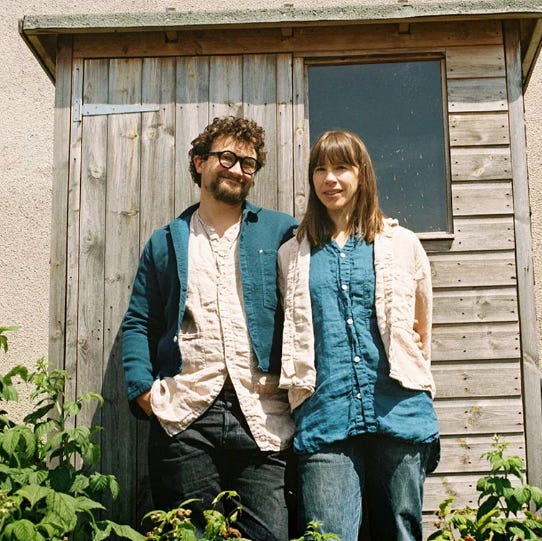

Back home in Stroud, Gloucestershire, Kroll started contemplating what “his own thing” could be. He felt that the Japanese and American brands he liked — the ones doing high-quality reproductions of vintage Americana — were great but also “quite specific to those cultures.” Moreover, he realized that, with the internet and fashion media making place-specific products accessible worldwide, he needed to do something that could really stand out. In a simple yet pioneering move, emblematic of niche menswear since the 2010s, Kroll went on a search for his own specificity, so to speak — personal and cultural. “I saw an opportunity to do something with British workwear and how it linked together the ideas of researching something not directly within the scope of fashion and then bringing [it] into a clothing point of view,” he recalled in a chat with Joseph Walia.
This set in motion an ongoing exploration of British workwear, specifically from the Great Steam Age, for which Tender has become known and which it translates into ongoing experiments with fabric, clay, and leather. It’s also where the brand’s name comes from, by the by: traditionally, a “tender” was the vehicle which carried the coal and water necessary to power a locomotive steam train on its journey across Britain. Given the word’s other meaning, there’s a duality at the heart of Tender. It’s got both a gentleness and a rawness, both a softness and a solidness to it — paying homage to an era of steam power, steel, and iron through imperfect, personal and handmade items.
Today workwear is a global phenomenon, or hyperobject if you will. And like almost every global phenomenon — from units of measurements to Fanta — it comes in many place-based, national and even local, varieties. The difference between a Barbour and a Filson is a well-known example. Both known for waxed cotton outerwear, the former’s design is informed by recreational pursuits in the countryside and the latter’s by surviving in the American wilderness. Likewise, Kroll found out that that the clothes worn by those working on a steam engine in Victorian era Britain were quite close to formal tailoring. “You’d have your high-waisted black wool pants and your black wool frock coat,” for instance. Looked at from a contemporary perspective, is this formal workwear? Or is it rugged tailoring? Tender’s jackets, coats, trousers, knitwear, shirts, belts, scarfs, bags, watches, sunglasses, and mugs offer answers to this singular question.
These material answers are all produced in highly limited runs at small manufacturers in England, with Kroll being personally involved in the process from start to finish. There are also one-offs cut from previous seasons’ fabrics or weaving experiments which did not make it into production, such as this ‘Type 006 Bandana’. Tender’s old-school website is an excellent resource if you want to get a sense of just how extraordinary this “process” is. An archive of newsletters, previous collections, and current offerings, it documents everything that went and goes into the creation of Tender — from coffee, walnut, turmeric, and Prussian blue dyeing to bark tanned leather, loom-state 16oz Japanese selvage denim, and using the Fair Isle knitting technique on natural undyed Voe Shetland wool yarn. When you scroll all the way down, you’ll hit upon this insightful piece. Kroll discusses how the usual “appearance-first” method of clothing design — taught at fashion schools like CSM, where he graduated and later worked as a sessional instructor — differs from the “construction-first” method he now prefers.

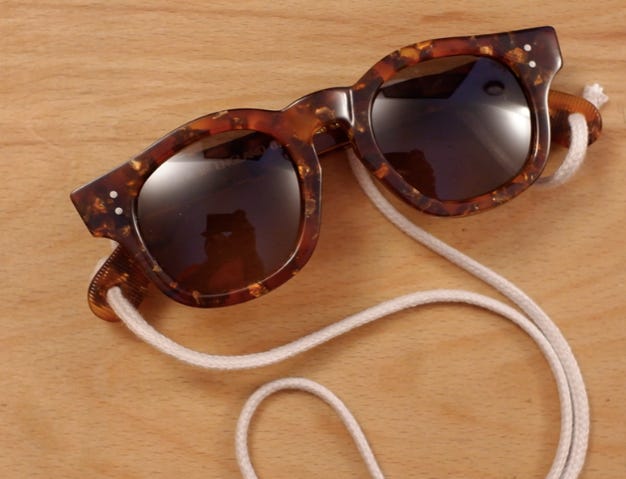
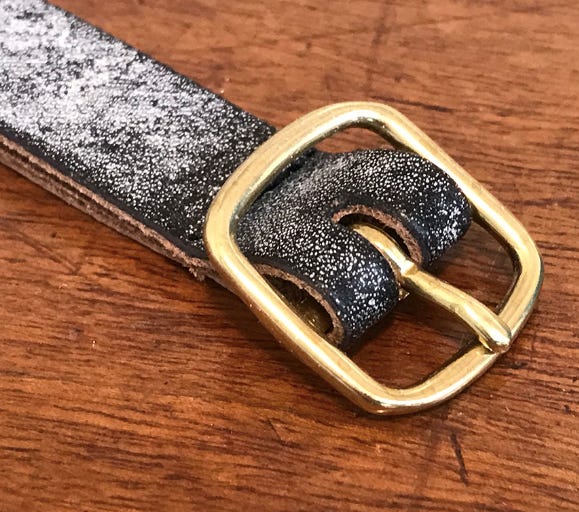

It’s this particular approach to designing, he adds, “which I think gives Tender a lot of its character.” And when you take a close look at typical Tender pieces like the ‘Type 900 Jacket’, ‘Type 430 Butterfly Shirt’ or ‘Type 156 Split Back Jeans’, you’ll see his point. Every single construction and material detail is thought through. And this not for looks or kicks, but to make sure the finished garment can become part of the owner’s life until it literally falls apart. That results in instantly recognizable, sometimes rather unconventional but always versatile and hard-wearing pieces.
Tender, in many ways, is a quintessentially British brand. Kroll was born, raised, and educated in Britain. It’s this country’s history that inspired the original aesthetic and designs of his brand. And it’s where all products are designed and produced. That makes the recent move to Phoenixville — a borough in Pennsylvania, United States, some 45 kilometers northwest of Philadelphia — a fascinating one. (And an interesting parallel case to Carter Altman’s recent move the other way, from Detroit to London.) I reached out to Kroll to hear about his experiences so far, curious to find out how he expects Tender to develop or change on American soil.
Tender in the USA: a new start or a natural continuation?
Well, I’ve actually been thinking a lot about sense of place, personally and professionally, recently. It’s an interesting time for me professionally, and an unusual opportunity to get to answer your question meaningfully. I’m not starting Tender the brand from scratch again, but I am starting Tender the company from scratch, with a whole new group of makers.
I would like Tender as a brand to reflect who and where the designer and producers are, rather than being an absolute. I think there’s a cultural difference between moving the production to a different country for practical reasons, rather than moving home for personal reasons (as I’ve done — this is a family move) and moving the brand at the same time.
I knew a very talented jeweller who used to live near us in the Cotswolds. She moved her family and business to LA a few years ago. The style evolved with their move and was an inspiration to me! I think at Tender’s pretty small scale, where I still pack everything up myself, and run the shop single-handedly, it’s appropriate for production to be close to home.
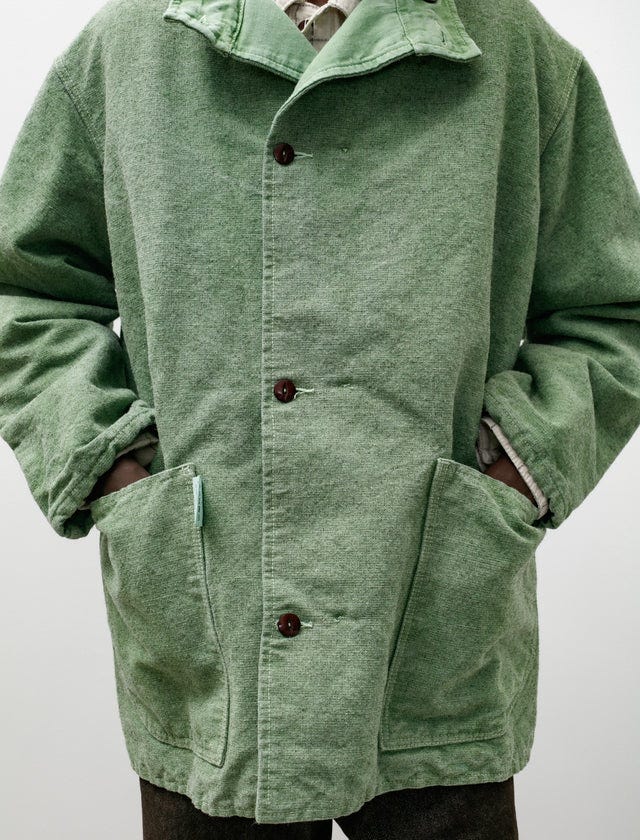
What kind of effects has the move had, creatively speaking?
It’s been a nice shake-up, to be working with new possibilities and within new limitations. SS25 (in store now) was designed and sewn in England, but dyed and finished in the US, so is the first steps into working with new people. AW25, which is being sewn in the US right now, was designed over our move and is a transitional collection, of sorts, with experimentation in construction I’ve not previously been able to do, and some new dyeing techniques that I’ve developed here. SS26, which I’ll be showing in Paris together with Working, and my friend Robert Newman’s brand Middle Distance, is fully designed and developed from scratch in the US.
And is this also changing or influencing your vision of Tender as a brand?
I remember when Noma moved from Copenhagen to Tulum. I recall thinking that it was really cool for something that’s so specifically associated with a location to move its operation completely, and in that way find out what’s distinct about it other than the location. In the same way, by moving Tender I guess I’m working out what makes Tender itself other than being a British (or American) brand.
That said, after considering doing things differently in the US, the only real change so far is the luxury of a separate studio and storeroom, rather than working from home, as I always did in the UK. It’s really nice to be able to leave the house to go to work, and come home at the end of the day.
You said that in the US you’ll be working with new possibilities and within new limitations. Could you give me a sense of what this means?
There have been some very specific manufacturing opportunities and changes — the nicest example of this, I think, is in seam construction. This does get very specific, though.
So, in my UK factory, shirt and jacket seams were made on a single operation sewing machine. I’ve heard it called a run-and-fell machine, a jeans seam machine, and a case seam machine, but in Leicester it’s known as a freed-of-the-arm. This has a folder and two chainstitch mechanisms, so it folds the two fabric edges around each other and sews two parallel lines of stitching, plain on the outside of the garment and with a looped chain on the inside.
My new factory in the US doesn’t have this machine. We tried lots of different approaches, both by adapting other machines (fun and I learned a lot, didn’t work) and then experimenting with the seam construction from the ground up, as it were. Seams are now sewn with a single needle sewing machine, which means sewing each seam in multiple individual runs. This is how hand-made fine shirts are traditionally made, unlike workwear shirts which are traditionally done with a folder and chainstitch set-up.




As Tender fabrics are generally heavier, and I like the look of garments where the construction is apparent, and understandable, the seams have been made inside-out. This leaves the bulk of the seams, and two lines of topstitching, on the outside of the garment, and the smoother side, with one topstitch, on the inside. It makes a more comfortable garment on the inside, with the structural scaffolding of the sewing visible on the outside.
This is for the current production being sewn now, the AW25 delivery at the end of the summer. The design ideas come from my past UK sewing experience, but the production is adapted to the US. Learning from this, though, I’m now experimenting with how to minimize the number of seams in the first place, as sewing this way is very time consuming. New developments for SS26, arriving next spring, will be a result of this learning process, and better adapted for it.
I notice you speak of seasonal collections. But some of the items that first drew me to Tender about 10 years ago are still available on your website.
I do indeed work to seasons, approximately, and I sell to stockists on a seasonal basis. However for my own stock on Tender Stores I never go on sale, and I also encourage stockists to order from previous seasons, so there’s usually a mix of things available.
Because Tender’s such a small operation, really, I can afford to keep stock for a long time. It doesn’t take up all that much space. And apart from thick fabrics for cold weather and thinner ones for hot weather I don’t think of clothing as especially tied to a particular time of year.
More importantly, though, I think that by continuing to offer old styles, at full price and with as much celebration as new things, it upholds the integrity of the designs, and the other. Apart from the conversations around fast fashion and obsolescence, which I fully agree with but don’t have much to add to, I think that from an intellectual perspective it’s a pity to devalue good work after six months.
And how do you make sure Tender’s seasonal collections and individual designs reflect this?
I think Tender has evolved over the years, but I still wear things from the beginning and I think there’s enough coherence that it all stands together. I quite often remix, or remake, things from previous seasons. For example SS24 was made up of repeated styles, fabrics, and dyes, but available in combinations that hadn’t been made before. For example, stockists could order a shirt from 2016 in a 2022 fabric with a 2011 dye.
A final question. This is a period of more change for you, creatively and professionally speaking. At Paris Fashion Week you’ll also be presenting a new brand: Working. What’s that like? And how is it related to Tender?
Working is quite different from Tender, and it’s interesting to have two projects with different creative processes.
Tender is very personal to me, and I oversee everything. Design mostly takes place in my head, percolating while other stuff happens, and often coming together during the process of making samples in the factory, and largely governed by reacting to technical challenges in making. I really enjoy this approach, and it allows for a very specific feeling to the products, which I think is fitting for Tender.
Working, on the other hand, is much more about a purer design process, and collaboration in design. It’s an equal partnership between me and my old friend Robert Newman, and we share design and production 50/50, communicating by messages back and forward around our own days in Pennsylvania and Scotland. It’s exciting to be involved with something that I don’t have complete control over, and where my assumptions are challenged and met by a designer I really respect. Besides, I haven’t worked with another designer in 16 years! So it’s a really refreshing experience, and the balance of Tender and Working seems very positive.



